I was excited when Timothy sent me the photograph of the 1929 Fargo. What a cool flagship automobile! My enthusiasm was slightly cooled by the fact the photo was somewhat distracting. Someone began a project with the photograph sometime during it’s past. The best way to explain is to show the original complete photograph below. 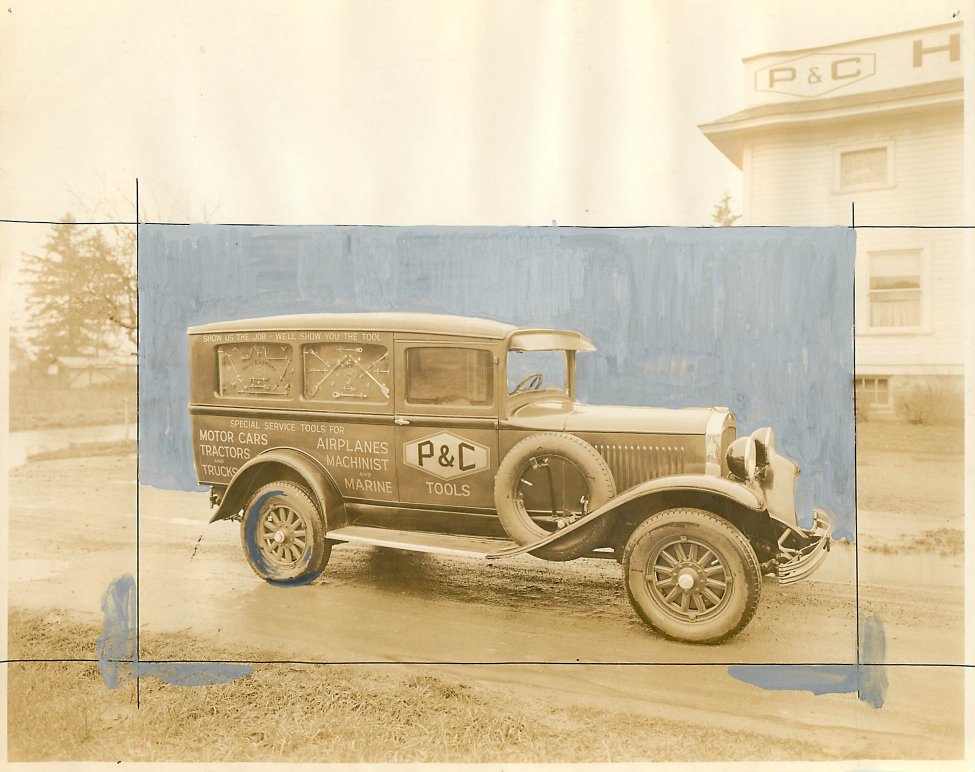 The truck is absolutely unique, and speaks volumes. It had to be included in the website. The question was….what do I do with it? The first order of business, as an intermediate gimpster (linux open source software called Gimp similar to Photoshop) was to remove the lines and blue paint.
The truck is absolutely unique, and speaks volumes. It had to be included in the website. The question was….what do I do with it? The first order of business, as an intermediate gimpster (linux open source software called Gimp similar to Photoshop) was to remove the lines and blue paint.
I began by touching up the rear tire a little and removing the blue paint. Obviously, even a bad repair job would be less distracting than blue paint.
Next was removing the blue background and black lines. With the blue background removed and replaced with transparency, what next? After experimenting with dropping in a few different backgrounds and patterned textures, I decided to leave the transparency. The background would become whatever background the image was placed in.
Next was identification. What was the truck? A little digging on the web had me convinced the truck was a 1929 model year. It looked close to the 1929 Plymouth. Kind of like the 1929 Essex but the exposed door hinges and slope of the roof ruled out the Essex.
I finally decided to call for some outside expertise and emailed the photo to the Cascade Pacific Plymouth Organization. They are a group dedicated to the “preservation and enjoyment of Plymouth automobiles” located in Oregon.
Within several hours, Robin sent me a reply telling me he believed the truck was a 1929 Fargo Clipper. He asked several other members to evaluate the photo. The next morning Jim sent me not only his corroboration of the identity of the truck, but also product information specific to that year of Fargo.
Jim told me the Fargo was introduced in 1928 and only ran for a few years. When Chrysler purchased Dodge Brothers, they discontinued the Fargo. The Fargo product line was resurrected in 1936 in Canada and ran there into the 1980’s (sold in export but not in the USA). In some of the information Jim sent me I noticed the Fargo was sold in 1/2 ton and 3/4 ton varieties. The 1/2 ton was known as the “Packet” and the 3/4 ton was known as the “Clipper”. Different engines were available for each. I’m unsure whether the P&C truck was the “Packet” or “Clipper”, but closely resembles other photographs of “Clipper’s”.
In the product literature was the following “Price List”. Notice seats other than the driver’s seat is an “option”. Other options include bumpers and paint! Special color combinations were expensive. Isn’t history fun…you just can’t make this stuff up! 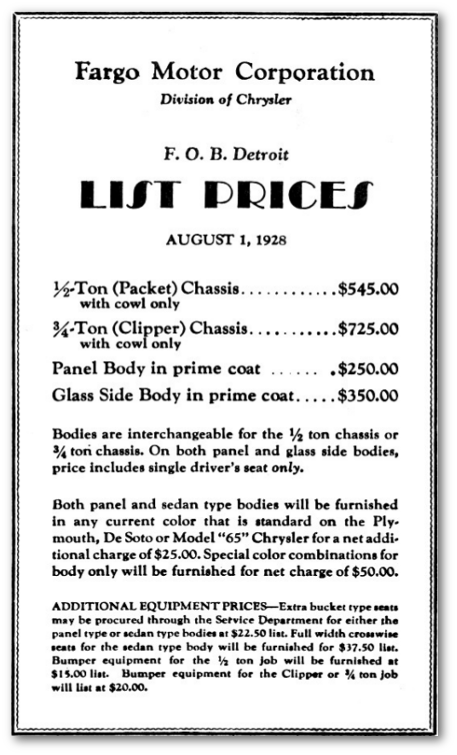 Can you imagine going to a car dealership today to order your new car and discovering that the seats, bumper and paint are going to be options?
Can you imagine going to a car dealership today to order your new car and discovering that the seats, bumper and paint are going to be options?
Also notice (below List Prices) the advanced “Technical Features” of the Fargo. Things like four hydraulic brakes and an air filter. And my favorite, the “Body Impulse Neutralizer“!
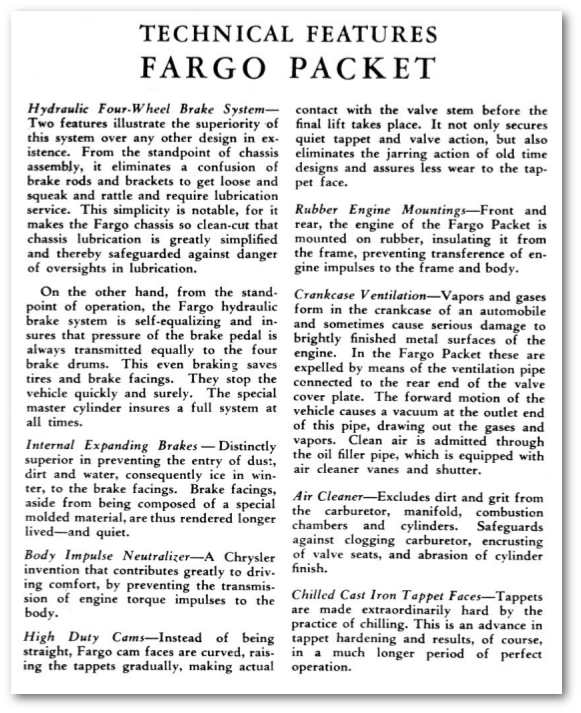
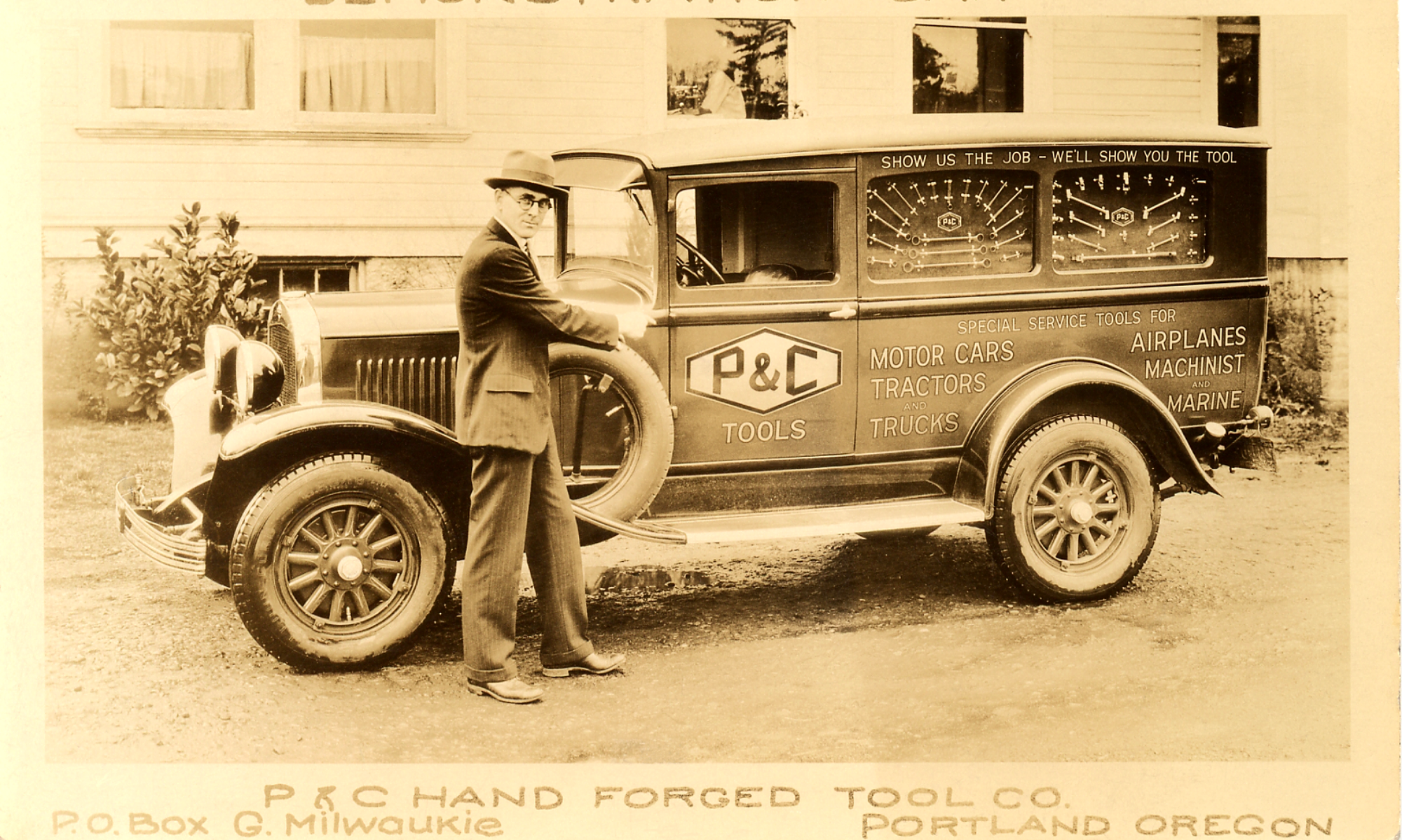
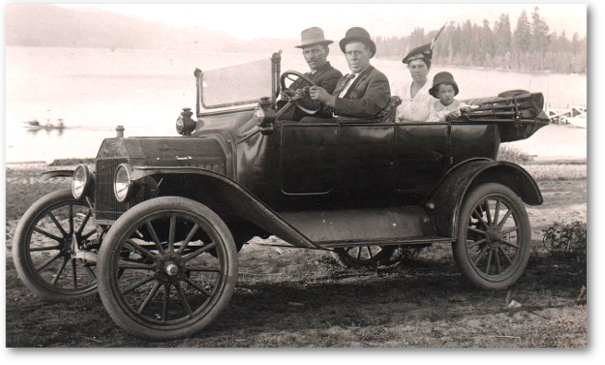 The car is definitely a Ford Model T. A Touring model, because it had the soft top. I developed a year of manufacture by the following process of elimination. The car has electric front lights, which first came out in 1915. The front fenders were of a design from the 1914-1916 period, and saw a substantial change in 1917. I was left with 1915 or 1916. The only difference I could find between those two model years (that would be apparent in a picture) was the 1915 had a brass front bezel ring on the front lights. In the 1916 model the ring was painted. On close scrutiny, with the picture magnified, the light bezels on Charlie’s Model T appear to be brass. Far from definitive, however. I would welcome comments from anyone with more information.
The car is definitely a Ford Model T. A Touring model, because it had the soft top. I developed a year of manufacture by the following process of elimination. The car has electric front lights, which first came out in 1915. The front fenders were of a design from the 1914-1916 period, and saw a substantial change in 1917. I was left with 1915 or 1916. The only difference I could find between those two model years (that would be apparent in a picture) was the 1915 had a brass front bezel ring on the front lights. In the 1916 model the ring was painted. On close scrutiny, with the picture magnified, the light bezels on Charlie’s Model T appear to be brass. Far from definitive, however. I would welcome comments from anyone with more information.

